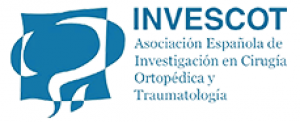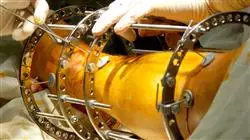University certificate
Scientific endorser

The world's largest faculty of medicine”
Introduction to the Program
New scenarios in traumatology drive us to propose new specialization programs that meet the real needs of experienced professionals, so that they can incorporate new advances into their daily practice”

The field of Orthopedic Surgery and Traumatology is constantly evolving. The amount of information is increasing exponentially every year and it has become impossible to keep up to date in all areas of the specialty, unless you have a team of experts, in different sub-areas, to work together, making intelligent differentiations between all of the information.
In addition, the current tendency to sub-specialize in a specific anatomical area or surgical technique makes it more difficult to keep up to date in those areas that are less commonly treated and, at times, makes it difficult and costly to keep up to date with the latest developments. It should also be noted that the increase in the average life expectancy is leading to a higher number of degenerative and disabling osteoarticular injuries.
For this reason, trauma surgery has undergone enormous development, especially in joint replacements, spine surgery, arthroscopic surgery, surgical management of fractures through different osteosynthesis techniques, reparative surgery, etc. This means that in the future there will be great medical and surgical progress in the improvement of patients affected by pathologies of the locomotor apparatus.
Bring your knowledge up to date with this Professional master’s degree in Update in Orthopedic Surgery and Traumatology”
This Professional master’s degree in Update in Orthopedic Surgery and Traumatology contains the most complete and up-to-date scientific program on the market. The most important features include:
- More than 120 clinical cases presented by experts in the different specialties
- The graphic, schematic, and practical contents with which they are created, provide provide scientific and healthcare information on those medical disciplines that are essential to professional practice
- Presentation of practical workshops on procedures and techniques
- An algorithm-based interactive learning system for decision-making in the clinical situations presented throughout the course
- Clinical practice guides on the different pathologies with special emphasis on test-based medicine and research methodologies in surgical procedures
- All of this will be complemented by theoretical lessons, questions to the expert, debate forums on controversial topics, and individual reflection assignments
- Content that is accessible from any fixed or portable device with an Internet connection
This Professional master’s degree may be the best investment you can make when choosing a refresher program for two reasons: in addition to updating your knowledge in Orthopedic Surgery and Traumatology, you will obtain a qualification from TECH Global University”
The teaching staff includes a team of healthcare professionals, who bring their experience to this training program, as well as renowned specialists from leading scientific societies.
The multimedia content developed with the latest educational technology will provide the professional with situated and contextual learning, i.e. a simulated environment that will provide immersive training program to train in real situations.
This program is designed around Problem Based Learning, whereby the specialist must try to solve the different professional practice situations that arise during the course. For this reason, you will be assisted by an innovative, interactive video system created by renowned and experienced experts in the field of urologic surgery with extensive teaching experience.
Increase your decision-making confidence by updating your knowledge through this Professional master’s degree”
Improve your daily medical practice with this specialized training”
Why study at TECH?
TECH is the world’s largest online university. With an impressive catalog of more than 14,000 university programs available in 11 languages, it is positioned as a leader in employability, with a 99% job placement rate. In addition, it relies on an enormous faculty of more than 6,000 professors of the highest international renown.

Study at the world's largest online university and guarantee your professional success. The future starts at TECH”
The world’s best online university according to FORBES
The prestigious Forbes magazine, specialized in business and finance, has highlighted TECH as “the world's best online university” This is what they have recently stated in an article in their digital edition in which they echo the success story of this institution, “thanks to the academic offer it provides, the selection of its teaching staff, and an innovative learning method aimed at educating the professionals of the future”
A revolutionary study method, a cutting-edge faculty and a practical focus: the key to TECH's success.
The most complete study plans on the university scene
TECH offers the most complete study plans on the university scene, with syllabuses that cover fundamental concepts and, at the same time, the main scientific advances in their specific scientific areas. In addition, these programs are continuously being updated to guarantee students the academic vanguard and the most in-demand professional skills. In this way, the university's qualifications provide its graduates with a significant advantage to propel their careers to success.
TECH offers the most comprehensive and intensive study plans on the current university scene.
A world-class teaching staff
TECH's teaching staff is made up of more than 6,000 professors with the highest international recognition. Professors, researchers and top executives of multinational companies, including Isaiah Covington, performance coach of the Boston Celtics; Magda Romanska, principal investigator at Harvard MetaLAB; Ignacio Wistumba, chairman of the department of translational molecular pathology at MD Anderson Cancer Center; and D.W. Pine, creative director of TIME magazine, among others.
Internationally renowned experts, specialized in different branches of Health, Technology, Communication and Business, form part of the TECH faculty.
A unique learning method
TECH is the first university to use Relearning in all its programs. It is the best online learning methodology, accredited with international teaching quality certifications, provided by prestigious educational agencies. In addition, this disruptive educational model is complemented with the “Case Method”, thereby setting up a unique online teaching strategy. Innovative teaching resources are also implemented, including detailed videos, infographics and interactive summaries.
TECH combines Relearning and the Case Method in all its university programs to guarantee excellent theoretical and practical learning, studying whenever and wherever you want.
The world's largest online university
TECH is the world’s largest online university. We are the largest educational institution, with the best and widest online educational catalog, one hundred percent online and covering the vast majority of areas of knowledge. We offer a large selection of our own degrees and accredited online undergraduate and postgraduate degrees. In total, more than 14,000 university degrees, in eleven different languages, make us the largest educational largest in the world.
TECH has the world's most extensive catalog of academic and official programs, available in more than 11 languages.
Google Premier Partner
The American technology giant has awarded TECH the Google Google Premier Partner badge. This award, which is only available to 3% of the world's companies, highlights the efficient, flexible and tailored experience that this university provides to students. The recognition as a Google Premier Partner not only accredits the maximum rigor, performance and investment in TECH's digital infrastructures, but also places this university as one of the world's leading technology companies.
Google has positioned TECH in the top 3% of the world's most important technology companies by awarding it its Google Premier Partner badge.
The official online university of the NBA
TECH is the official online university of the NBA. Thanks to our agreement with the biggest league in basketball, we offer our students exclusive university programs, as well as a wide variety of educational resources focused on the business of the league and other areas of the sports industry. Each program is made up of a uniquely designed syllabus and features exceptional guest hosts: professionals with a distinguished sports background who will offer their expertise on the most relevant topics.
TECH has been selected by the NBA, the world's top basketball league, as its official online university.
The top-rated university by its students
Students have positioned TECH as the world's top-rated university on the main review websites, with a highest rating of 4.9 out of 5, obtained from more than 1,000 reviews. These results consolidate TECH as the benchmark university institution at an international level, reflecting the excellence and positive impact of its educational model.” reflecting the excellence and positive impact of its educational model.”
TECH is the world’s top-rated university by its students.
Leaders in employability
TECH has managed to become the leading university in employability. 99% of its students obtain jobs in the academic field they have studied, within one year of completing any of the university's programs. A similar number achieve immediate career enhancement. All this thanks to a study methodology that bases its effectiveness on the acquisition of practical skills, which are absolutely necessary for professional development.
99% of TECH graduates find a job within a year of completing their studies.
Professional Master's Degree in Orthopedic Surgery and Traumatology Update
It is to the Swiss physician Jean André Venel that we owe the implementation of orthopedics as a first-hand specialty, when in 1870 he founded the first clinic focused on treating anomalies in the locomotor system, especially bone deformities in children. Today, this branch of medicine and other related branches, such as traumatology, continue to be a great incentive to save lives while evolving at an impressive speed, given the new technological advances and scientific discoveries. Therefore, continuous training is required in this field, especially in its most practical issues, therefore, TECH offers the Professional Master's Degree in Orthopedic Surgery and Traumatology Update, a compilation of ten thematic modules ranging from generalities such as interventional radiology in musculoskeletal pathology, to new surgical techniques to treat epicondylitis and epitrocleitis, among others. Through a solid and interactive 100% online learning we will turn you into a high profile expert to face the greatest medical-clinical challenges.
Stand out among the best orthopedists and traumatologists.
We have an experienced multidisciplinary team in the area of medicine that serves as teachers to transmit to students a methodical vision of the work, through the analysis of real cases in forums that can be accessed from any device that has internet. Do you want to know how to replace a worn or arthritic joint with a prosthesis using minimally invasive techniques, modern implants and blood recovery systems? Our program teaches you how to do it. It is well known that musculoskeletal injuries, the result of degenerative disorders developed in the context of occupational health, currently represent a notorious and recurring problem for a large part of the population, even becoming a cause of depression. The Professional Master's Degree in TECH will give you enough theoretical and practical tools to address this challenge, so you will also be acquiring an added value of social commitment. We will also teach you about children's orthopedics, so elementary to treat incidents such as fractures, dislocations and similes, in addition to musculoskeletal tumors whose management can be complemented with various trauma procedures. Do not wait to surpass yourself, this is the most complete program on the market and only a click away.








